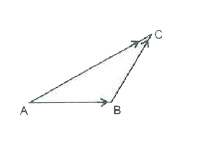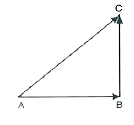For finding the area of a triangle ABC, which of the following entities are required ?
Angles A, B and side a
Angles A, B and side b
Angles A, B and side c
Either (a) or (b) or (c)
The correct Answer is:C
To find the area of triangle ABC, we can use various formulas depending on the information we have. Here’s a step-by-step explanation of the required entities:
Step 1: Understanding the Area of a Triangle
The area of a triangle can be calculated using different formulas based on the given parameters. The most common formulas include:
1. Using base and height: Area = (1/2) × base × height
2. Using two sides and the included angle: Area = (1/2) × a × b × sin(C), where a and b are the lengths of two sides, and C is the included angle.
3. Using Heron’s formula: Area = √(s(s-a)(s-b)(s-c)), where s is the semi-perimeter of the triangle, and a, b, c are the lengths of the sides.
Step 2: Identifying Required Entities
To determine which entities are required to find the area of triangle ABC, we need to consider the options provided:
1. Option 1: Angle A, Angle B, and Side A
- Here, we have two angles and one side. However, we cannot directly find the area because we need either the height or another side to use the angle-side-angle formula.
2. Option 2: Angle A, Angle B, and Side B
- Similar to option 1, this option also provides two angles and one side. We still lack the necessary information to calculate the area.
3. Option 3: Angle A, Angle B, and Side C
- This option provides two angles and one side. However, we can use the sine rule or the formula for the area involving two sides and the included angle. Since we have two angles, we can find the third angle (Angle C) and then use the side C with one of the angles to calculate the area.
Conclusion
Based on the analysis, the correct entities needed to find the area of triangle ABC are:
- Angle A, Angle B, and Side C (Option 3).
The area of a triangle can be calculated using different formulas based on the given parameters. The most common formulas include:
1. Using base and height: Area = (1/2) × base × height
2. Using two sides and the included angle: Area = (1/2) × a × b × sin(C), where a and b are the lengths of two sides, and C is the included angle.
3. Using Heron’s formula: Area = √(s(s-a)(s-b)(s-c)), where s is the semi-perimeter of the triangle, and a, b, c are the lengths of the sides.
To determine which entities are required to find the area of triangle ABC, we need to consider the options provided:
- Here, we have two angles and one side. However, we cannot directly find the area because we need either the height or another side to use the angle-side-angle formula.
- Similar to option 1, this option also provides two angles and one side. We still lack the necessary information to calculate the area.
- This option provides two angles and one side. However, we can use the sine rule or the formula for the area involving two sides and the included angle. Since we have two angles, we can find the third angle (Angle C) and then use the side C with one of the angles to calculate the area.
Based on the analysis, the correct entities needed to find the area of triangle ABC are:
- Angle A, Angle B, and Side C (Option 3).
Topper's Solved these Questions
Similar Questions
In a triangle ABC, which of the following quantities denote the area of the triangles a2−b22sinAsinBsin(A−B)
View SolutionConsider the following statements :
1. Let D be a point on the side BC of a triangle ABC: If area of triangle ABD = area of triangle ACD, then for all points O on AD, area of triangle ABO = area of triangle ACO.
2. If G is the point of concurrence of the medians of a triangle ABC, then area of triangle ABG = area of triangle BCO = area of triangle ACG.
Which of the above statements is/are correct?
View Solution
Knowledge Check
In triangle ABC, which of the following is not true :
 A−−→AB+−−→BC+−−→CA=→0B−−→AB+−−→BC−−−→AC=→0C−−→AB+−−→BC−−−→CA=→0D−−→AB−−−→CB+−−→CA=→0
A−−→AB+−−→BC+−−→CA=→0B−−→AB+−−→BC−−−→AC=→0C−−→AB+−−→BC−−−→CA=→0D−−→AB−−−→CB+−−→CA=→0For △ABC , which of the following is incorrect ?
A(BC−AB)<ACB(AC−BC)<ABC(AC−AB)<BCDNone of theseIn ΔABC, which of the following is not true ?
 A−−→AB+−−→BC+−−→CA=→0B−−→AB+−−→BC−−−→AC=→0C−−→AB+−−→BC−−−→CA=→0D−−→AB−−−→CB+−−→CA=→0
A−−→AB+−−→BC+−−→CA=→0B−−→AB+−−→BC−−−→AC=→0C−−→AB+−−→BC−−−→CA=→0D−−→AB−−−→CB+−−→CA=→0
Find the area of a triangle ABC if the coordinates of the middle points of the sides of the triangle are (−1,−2),(6,1)and(3,5)
View SolutionIn any triangle ABC, if 2Δa−b2c=c3, (where Δ is the area of triangle), then which of the following is possible ?
View SolutionWhich of the following is true in a triangle ABC
View SolutionConsider the two similar triangles ABC and DEF. Which of the following is correct about the ratio of the area of the triangle ABCandDEF ?
View SolutionConsider the two similar triangles ABC and DEF. Which of the following is correct about the ratio of the area of the triangle ABCandDEF ?
View Solution
